Many beginners using mirrorless cameras often feel their photos don’t turn out the way they imagined. The most important first step when learning how to take better photos is understanding photo composition. By understanding how to frame your subject and arrange elements within the shot, you can instantly improve the quality of your photography.
In this article, we’ll cover the basics of photo composition, key elements to consider, and examples of common photography composition techniques. These beginner photography tips for composition can be put into practice the very next time you are out with your camera.
What You’ll Learn In This Article:
- The basics of photo composition and why it’s essential for better photos
Discover beginner photography tips that show how strong composition instantly improves your shots. - Key elements of composition such as framing, balance, and leading lines in photography
Learn how to arrange subjects and backgrounds using classic composition rules in photography. - Common types of composition in photography, including the rule of thirds and symmetry
Explore photo composition examples and techniques like the rule of thirds photography for better balance. - Practical photo composition techniques you can apply in any shooting situation
Get actionable photo composition tips you can use right away with your mirrorless or DSLR camera. - How to use photography angles, perspectives, and layering in photography to add depth and creativity
Master visual composition strategies that transform everyday scenes into dynamic works of art.
What is Composition in Photography?
Photo composition is the key to good photography. So what exactly is composition? Composition is a way of thinking about how to arrange and organize subjects and elements in a picture.
Composition is used not only in photography, but also in painting, graphic design, video, cartoons, and many other types of works. Visual composition, and using photography angles and perspectives, can create balance, rhythm, and harmony in a work of art. It is no exaggeration to say that composition greatly influences the overall impression and message of a work.
5 Key Elements of Composition in Photography
Now, we will discuss five basic composition rules in photography: framing, leading lines, layering, vertical and horizontal format, and the amount of information in the background. We feature photo composition examples for each element.
1. Framing in Photography
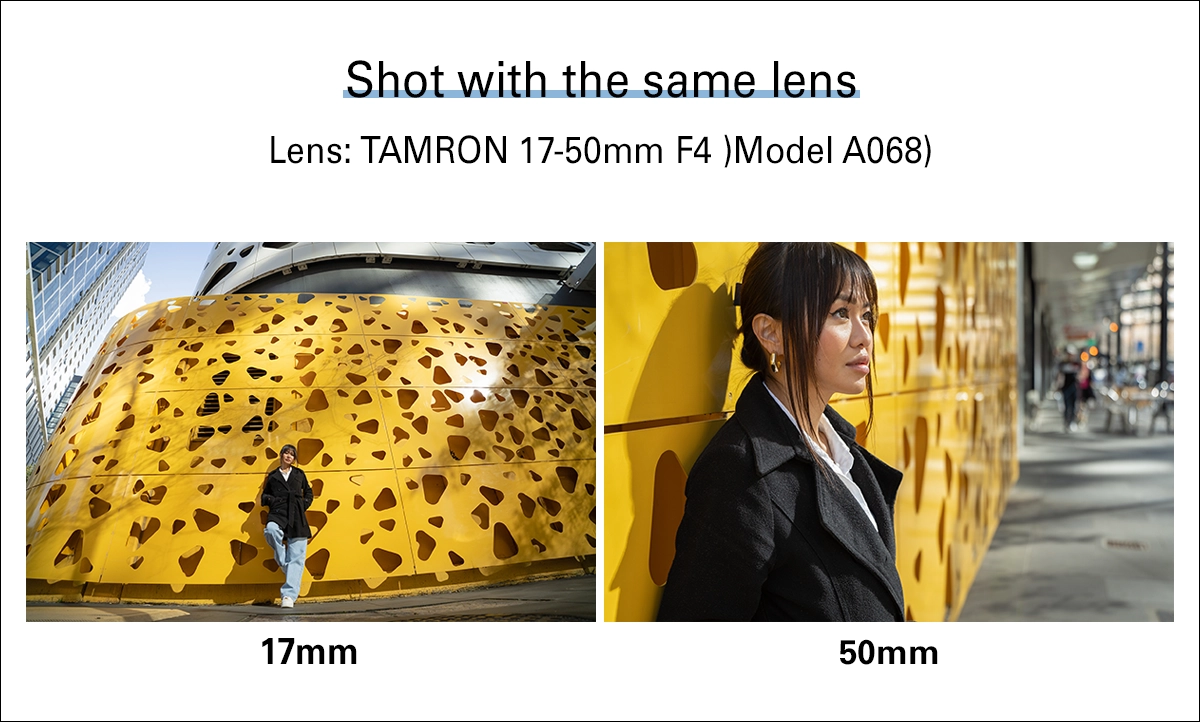
Framing is a word that describes how to capture the scene you see in front of you as a photograph. Framing in photography is the most basic rule of composition to master.
To put the spotlight on the main subject, it is important not only to “add” but to also “subtract” unnecessary elements. For example, simplifying the background and adding blur to the background will naturally focus attention on the central subject.
On the other hand, effectively including foreground and background elements can convey the situation in which the subject is placed and emphasize the contrast with the surroundings.
After deciding on the main subject of the photo, consider framing while keeping in mind “how can I make the main subject stand out?
2. Vertical and Horizontal Format Photo Composition
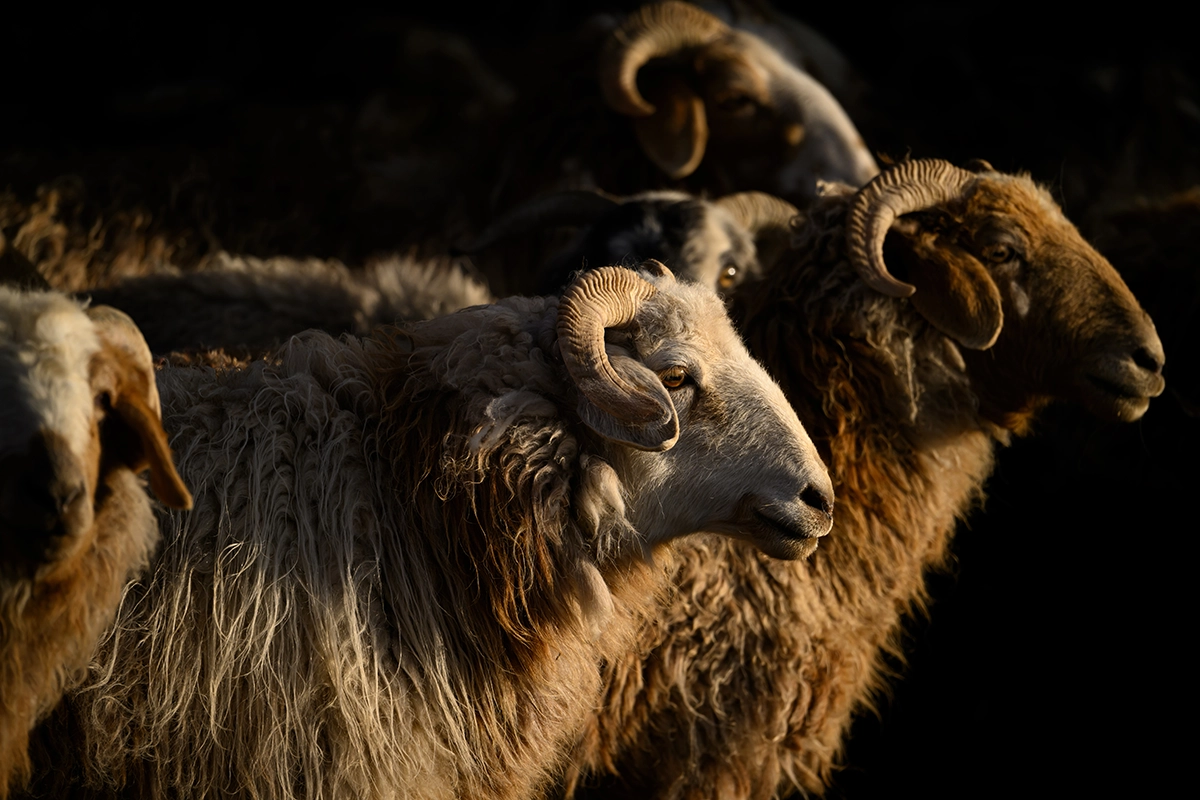
There are two general types of photo formats:
- Vertical format: Vertical photos tend to move the eye from top to bottom, giving the impression of emphasizing size, shape, and lines, not to mention capturing the entire image of a long, vertical subject. For example, it is often chosen for portraits, architecture, and lifestyle photography.
- Horizontal format: Horizontal photos tend to move the eye from left to right. This creates an impression of scale when photographing landscapes and nature and expresses dynamism when photographing sports and other subjects that move from side to side. It is best to choose the most appropriate format, keeping in mind the movement of the human eye.
3. Leading Lines in Photography

Leading lines are lines that guide the eye. There are a variety of leading lines, including horizontal, vertical, diagonal, and curved lines. If you make good use of these lines, you can subconsciously lead people’s eyes to the subject area.
For example, in landscape photography, vertical, horizontal, and diagonal placement of lines created by nature, such as mountain ranges, roads, and rivers, can create depth and a three-dimensional effect. In addition, placing the subject and subtopics at the intersections in a three-part composition, for example, will create a flowing, well-balanced photograph.
4: Layering in Photography
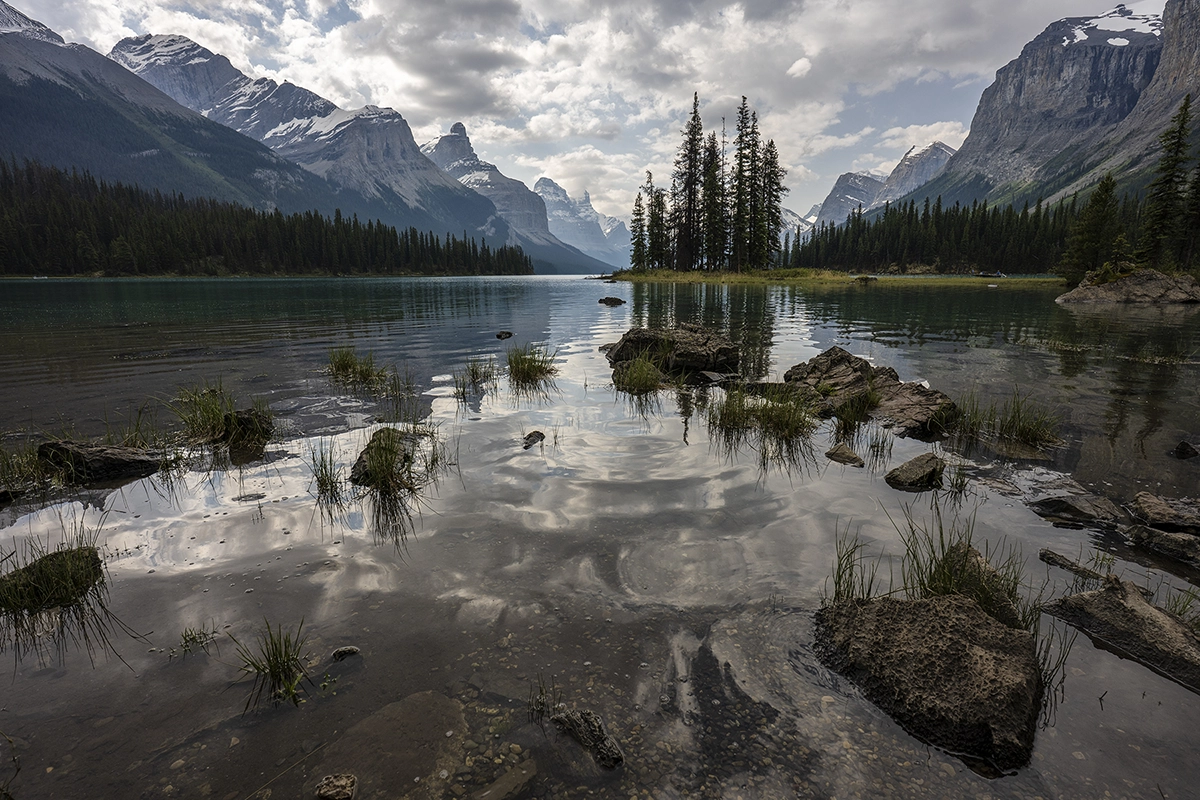
Layering refers to the superposition of foreground, midground, and background. The foreground is the foremost object in the foreground, and the background is the farthest object in the background. The midground is what lies between the foreground and the background. Layering the foreground, middle ground, and background creates depth and dynamism in a photo.
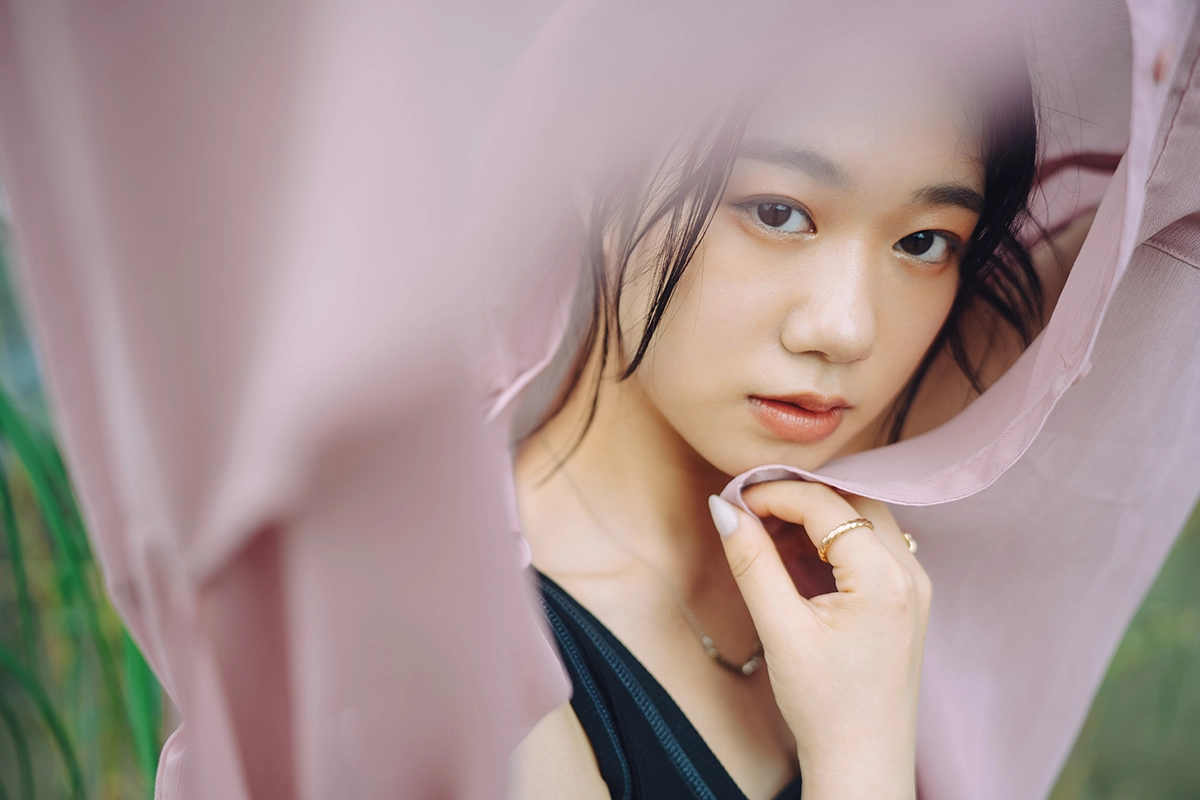
In portraits, for example, the inclusion of a foreground blur can give the impression of looking into the subject and create an emotional atmosphere. It is possible to create a crisp, attention-grabbing photo without boring the viewer.
5. Amount of Information in the Background of the Composition

The amount of information in the background is also an important element of composition. If the amount of information in the background is small, the impression of the subject is enhanced. On the other hand, if the background contains more information, the relationship between the subject and the surrounding situation is emphasized.
For example, a simple wall surface for the background in a portrait or the creation of a large blur as in the image above will reduce the amount of background information. The viewer will then inevitably focus on the subject.
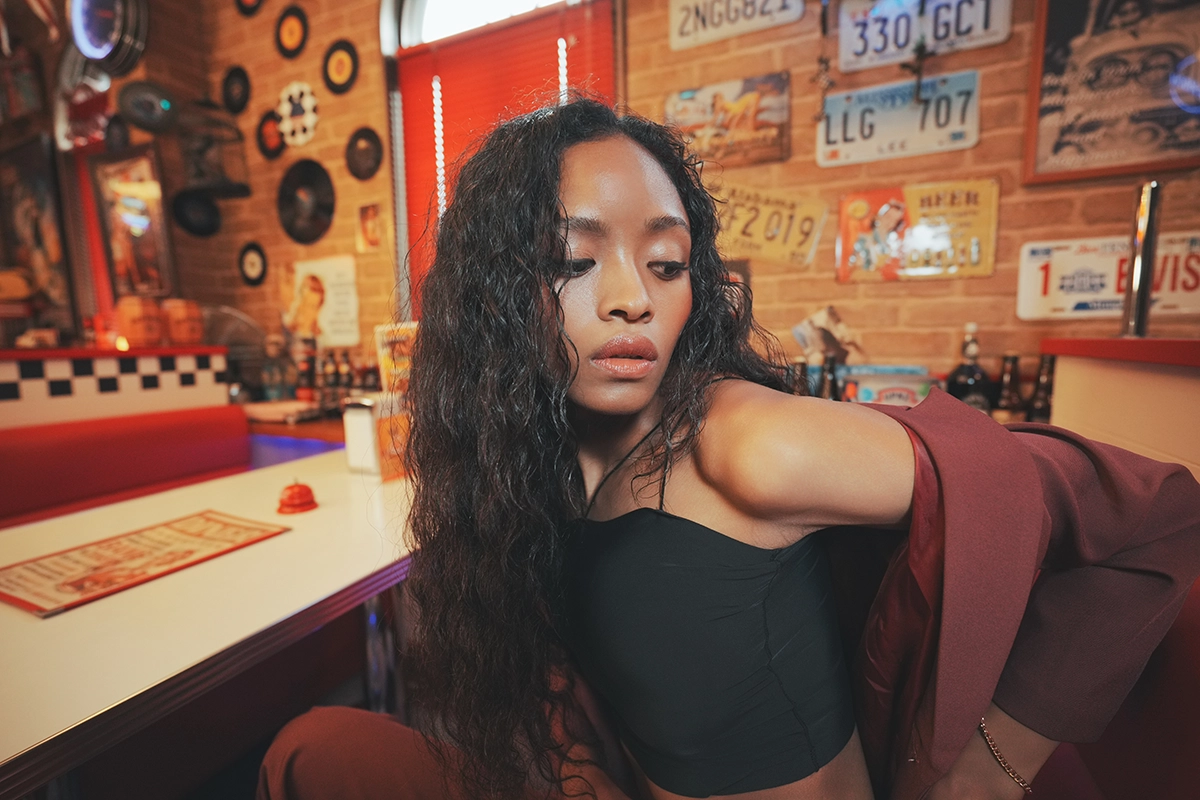
Conversely, capturing a solid background of natural scenery, indoor setting, or a cityscape like this image above will strengthen the meaning and story of the subject’s presence in the scene and create drama.
Use different amounts of bokeh and different angles of view (wide-angle lens or telephoto lens, etc.) to crop the background in different ways.
Types of Composition in Photography
There are several classic types of photo composition that photographers use to create stronger, more impactful images. Instead of just placing your subject within the frame, you can improve your photography by applying proven photo composition techniques such as the rule of thirds, symmetry, leading lines, and layering. Mastering these approaches helps you take more balanced, engaging, and professional-looking photos.
Rule of Thirds Photography

Rule of thirds is a composition in which the image is divided vertically and horizontally into 3 x 3 sections, and the central subject and supporting material are placed at an intersection within the grid, called a power point. This composition creates the appropriate amount of blank space and crispness in the image, resulting in a well-balanced photograph.
The rule of thirds composition is one of the most versatile compositions that can be used in a variety of photographic situations, including portraits, landscapes, and wildlife photography. It is one of the top composition rules in photography, so it is best to master it first.
Four-Section Photo Composition (Rule of Fourths)
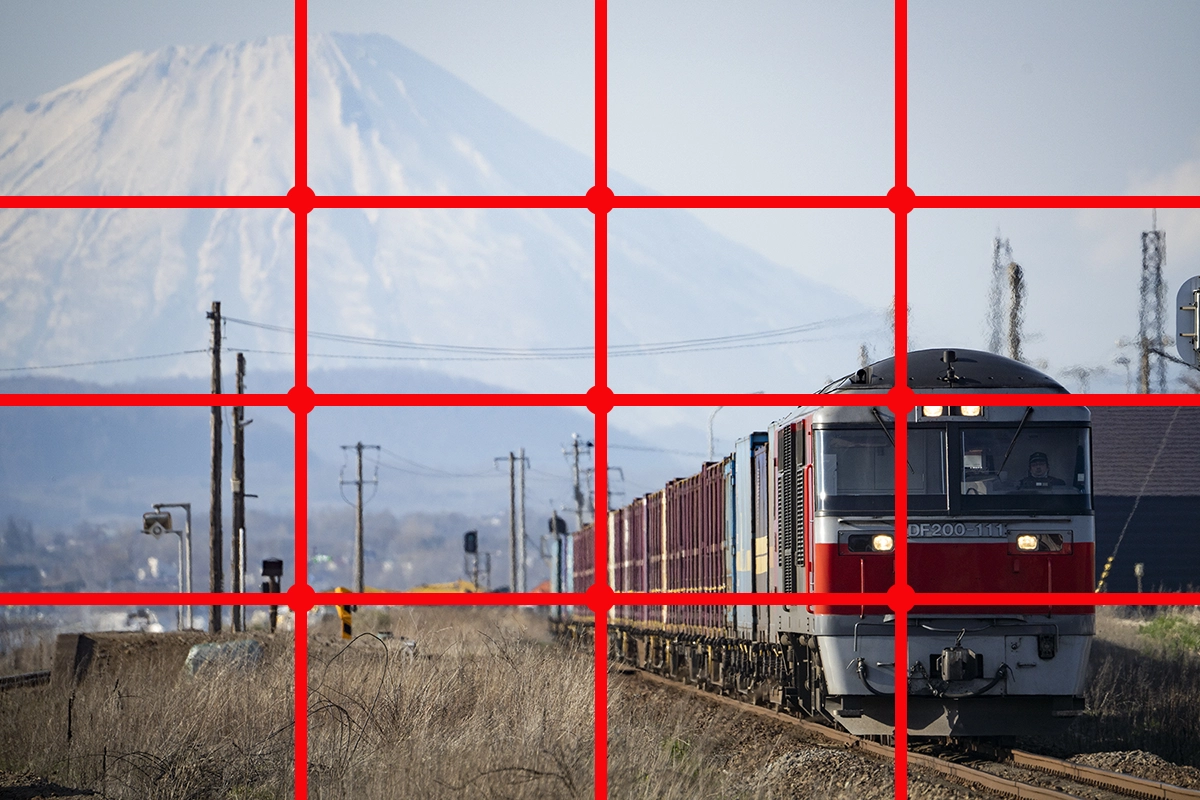
The quadrant composition, or rule of fourths, is a variant of the rule of thirds. This is a composition in which the image is divided vertically and horizontally into 4 x 4 equal sections, with the key subject placed at each intersection, and the foreground and scene borders placed at each intersection. Like the rule of thirds composition, the rule of fourths is one of the compositions that is easy to use to create a good balance in photography.
The four-section composition can be used to create a sense of stability when there is little density in relation to the sense of scale, such as in a vast landscape, or when you want to emphasize a sense of distance and plenty.
Split Photo Composition
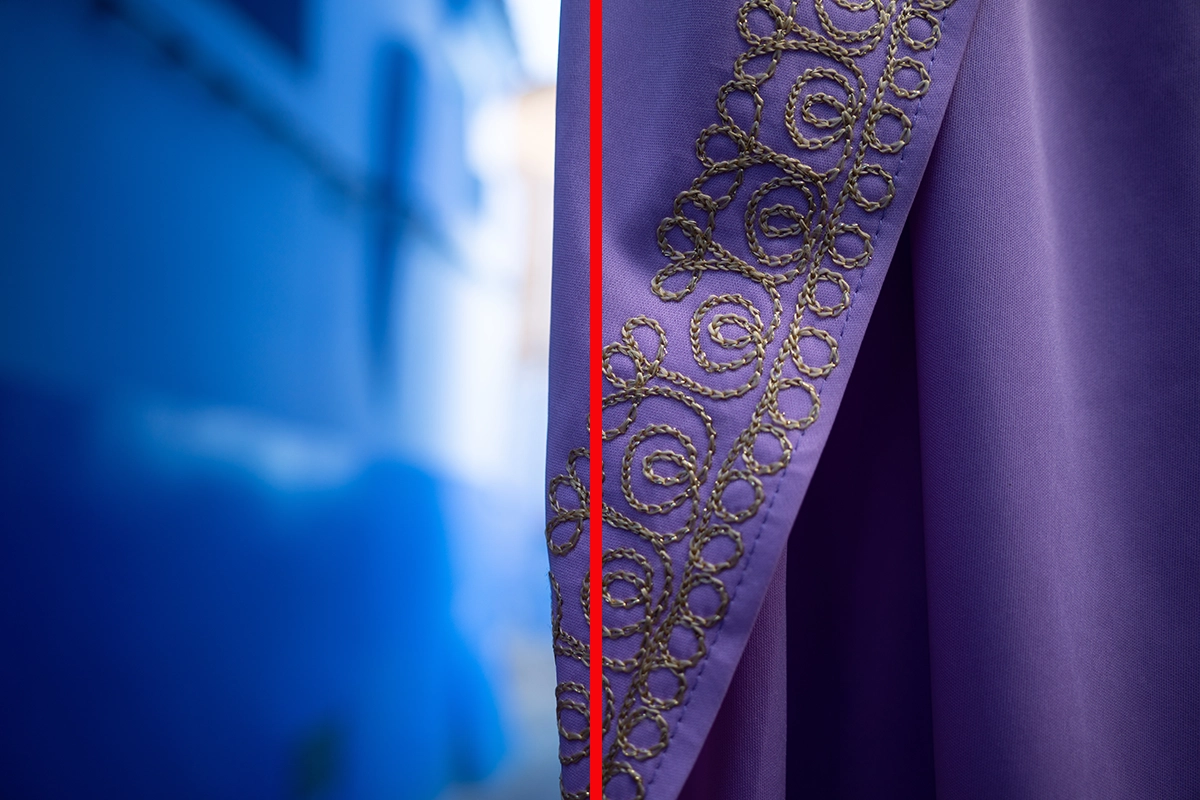
A split composition is a simple and powerful composition where the subject is placed in two equal sections, either vertically or horizontally. It is often used in landscape photography. Images of seascapes, mountains, rivers, and cityscapes all benefit from this composition style. By focusing on a horizontal or vertical line, a simple yet powerful impression is created.
It can also be used to emphasize the contrast between the inside and outside of a boundary, such as the contrast between indoors and outdoors.
Hinomaru Photo Composition

Hinomaru composition is a composition in which the central subject is placed in the center of the picture, like the Japanese national flag. It is often used when you want to capture a single subject, such as a person, animal, flower, insect, etc. When using this composition, a simple background will make the subject stand out more.
Diagonal Photo Composition
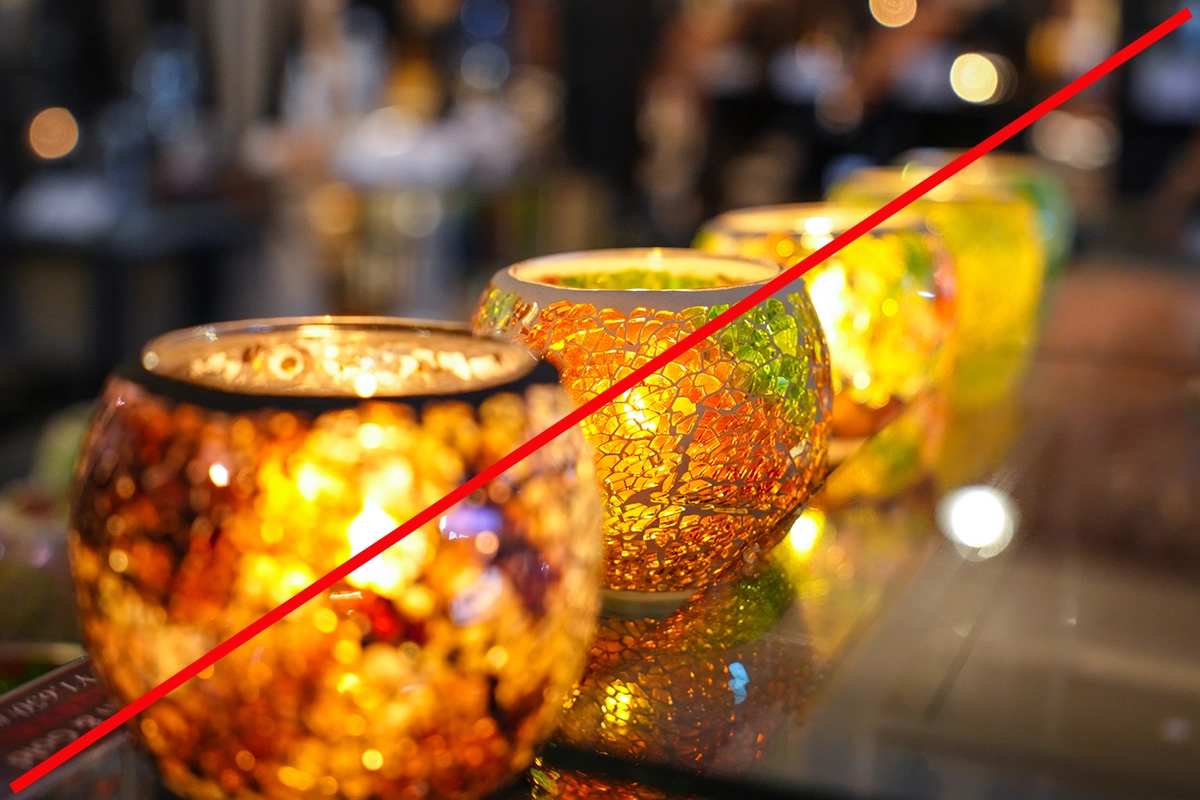
Diagonal composition is a composition used to create depth. In this composition, the subject is placed on the diagonal of the frame. For example, placing the lines of buildings, bridges, roads, and other structures on the diagonal creates depth and dynamism. Also, arranging objects on the diagonal in a table photo, for example, can create a rhythm without being flat.
Triangular Photo Composition
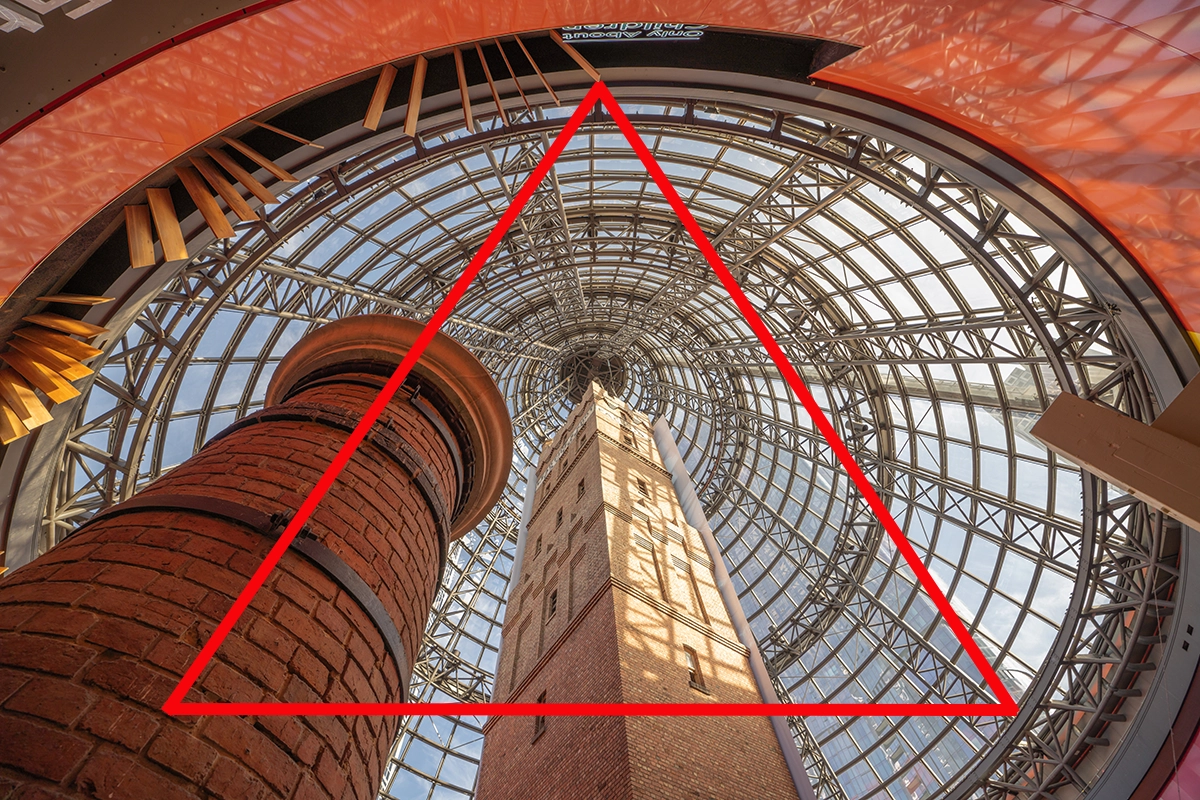
Triangular composition is a composition where the subject is placed on the vertices or sides of a triangle. This composition is recommended when you want to create a sense of balance and stability. It is used in landscapes, portraits, and other types of photography, and is ideal for expressing the majesty of natural landscapes and for photographing large subjects such as mountains or buildings in a balanced manner.
Curved Photo Composition

Curved line composition is a composition that takes advantage of the curves of the subject or places the point of interest on the curves. In addition to photographing curved structures and roads, it can also be used to express the rhythm of mountain ranges and coastlines.
Symmetry Photo Composition
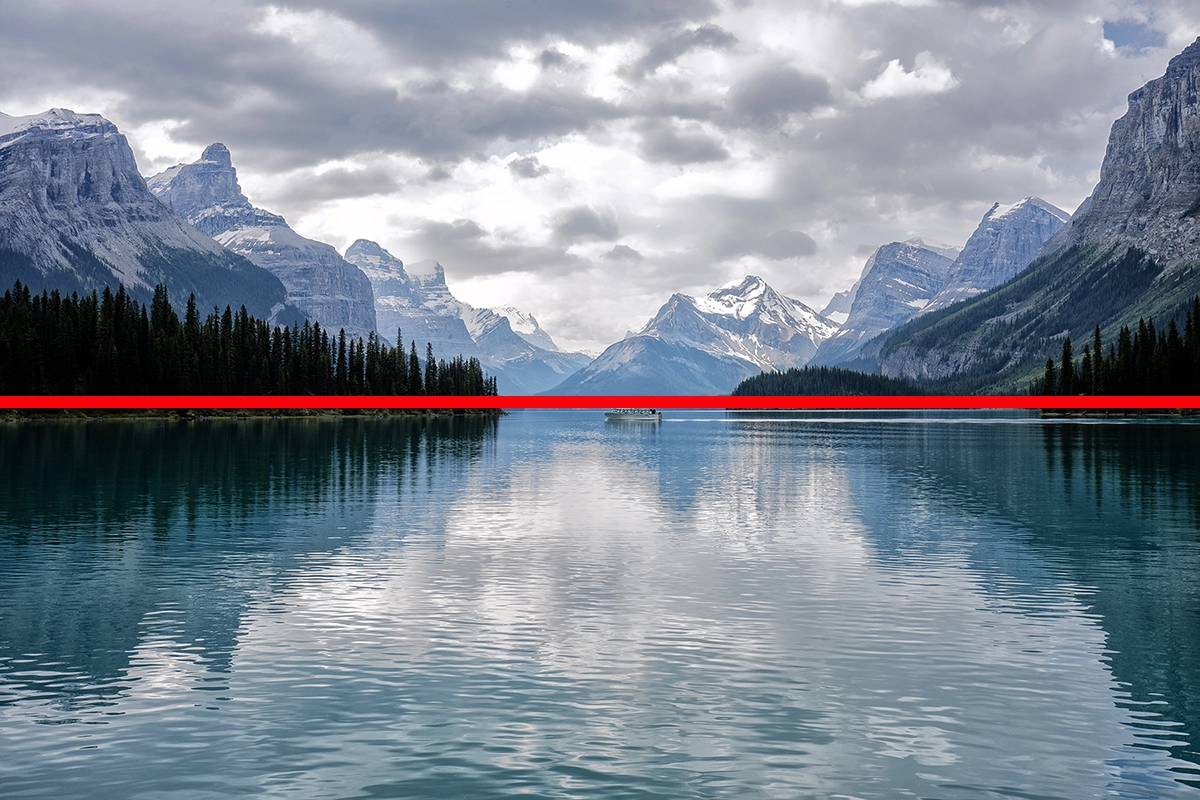
Symmetrical composition is a composition in which the subjects are arranged so that they are symmetrical either vertically or horizontally. It gives the impression of a mirror, and the geometric beauty of the composition is emphasized.
Fibonacci Spiral Photo Composition
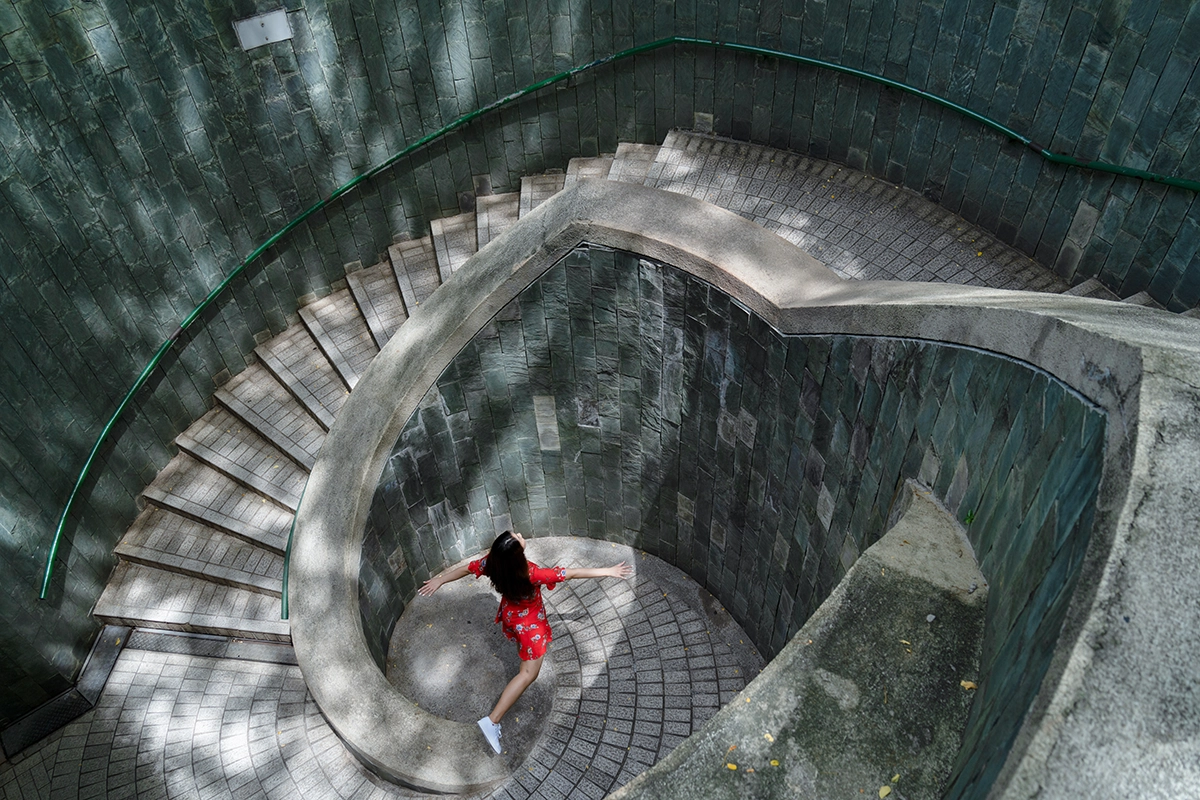
Fibonacci spiral photo composition arranges subjects along a spiral that follows the golden ratio.* This natural curve creates leading lines that guide the viewer’s eye toward the focal point, resulting in a visually pleasing and well-balanced photograph.
*What is the golden ratio? The golden ratio is a mathematical principle that describes a proportion seen in nature and art. In photography, it’s often applied as the Fibonacci spiral (or golden spiral photography) to achieve a more balanced, visually appealing photo composition.
Practical tip: Many cameras and editing tools offer a Fibonacci spiral or golden ratio overlay grid. When composing your shot, position your main subject where the spiral tightens, and allow other elements to flow along the curve. This technique works especially well for landscapes, architecture, and still life photography, where you want to create harmony and a sense of natural movement.
Contrast Photo Composition

Contrast composition is a composition that contrasts subjects using size, color, light and dark, and shape. By placing contrasting objects on the same screen, such as a large object and a small object, or a bright light and a dark light, the main subject can be enhanced.
Tunnel Photo Composition

Tunnel composition is a composition in which the subject is placed in the center and surrounded by other elements, like a tunnel. The elements surrounding the subject serve as leading lines and reinforce the impression of the subject, giving the viewer the feeling of peering into the scene.
Move to Vary the Distance Between You and Your Subject

In framing and composing a photograph, the distance and positioning of the subject is also an important point. Find the best composition by changing the distance between you and the subject, the position of the camera, and the angle.
Angle (Camera Angle)
Angle refers to the angle at which the camera is pointed. There are three main types of angles:
- Low angle: the camera pointing up can create a sense of openness and dynamism
- High angle: the camera pointing down can create a sense of stability, protection, and ownership
- Horizontal angle: the camera is level, which tends to create a balanced and calm impression
Position (Where You Hold the Camera)
Position refers to the position in which the camera is held. There are three main categories:
- High position: creates the sensation of looking down on the subject.
- Low position creates a sense of space, power, and dignity
- Eye level: held at the subject’s eye level can give a sense of realism
Recommended Tamron Lenses for Beginners
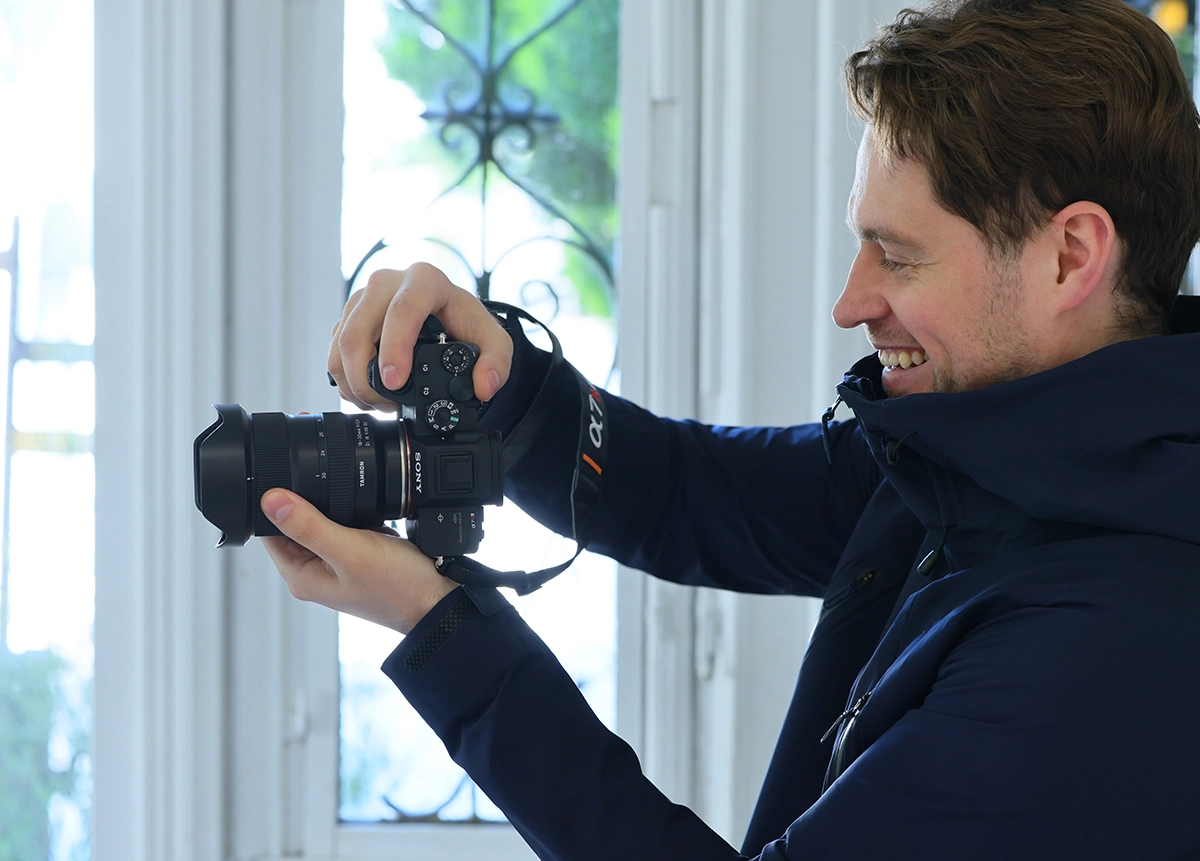
To achieve the photo composition you imagine, it’s essential to adjust focal length and aperture (f-number) properly. Below, we introduce Tamron lenses recommended for beginners that make it easier to practice strong composition techniques.
All-In-One Zoom Lenses
- 18-300mm F/3.5-6.3 Di III-A VC VXD (Model B061) for Sony E, Canon RF, Fujifilm X, and Nikon Z APS-C
- 25-200mm F/2.8-5.6 Di III VXD G2 (Model A075) for Sony E
- 28-200mm F/2.8-5.6 Di III RXD (Model A071) for Sony E
- 28-300mm F/4-7.1 Di III VC VXD (Model A074) for Sony E
Wide-Angle Zoom Lenses
- 11-20mm F/2.8 Di III-A RXD (Model B060) for Sony E, Canon R, and Fujifilm X APS-C
- 16-30mm F/2.8 Di III VXD G2 (Model A064) for Sony E and Nikon Z
- 17-50mm F/4 Di III VXD (Model A068) for Sony E
Standard Zoom Lenses
- 17-70mm F/2.8 Di III-A VC RXD (Model B070) for Sony E and Fujifilm X APS-C
- 20-40mm F/2.8 Di III VXD (Model A062) for Sony E
- 28-75mm F/2.8 Di III VXD G2 (Model A063) for Sony E and Nikon Z
Telephoto Zoom Lenses
- 50-300mm F/4.5-6.3 Di III VC VXD (Model A069) for Sony E
- 50-400mm F/4.5-6.3 Di III VC VXD (model A067) for Sony E and Nikon Z
- 70-180mm F/2.8 Di III VC VXD G2 (Model A065) for Sony E and Nikon Z
- 70-300mm F/4.5-6.3 Di III RXD (Model A047) for Sony E and Nikon Z
Try Different Compositions to Improve Your Photos
Composition is an important technique that affects the impression of a photograph. You should consider composition while keeping in mind the photography composition tips such as framing, leading lines, layering, and the amount of information in the background.
Finding the best composition to create a better work of art also requires ingenuity in angles, positions, and leaning in and out. Use the typical compositions introduced in this article as a guide as you repeatedly release the shutter.
Learn more about Tamron lenses at an authorized Tamron dealer near you or shop now at the official TAMRON Store.
